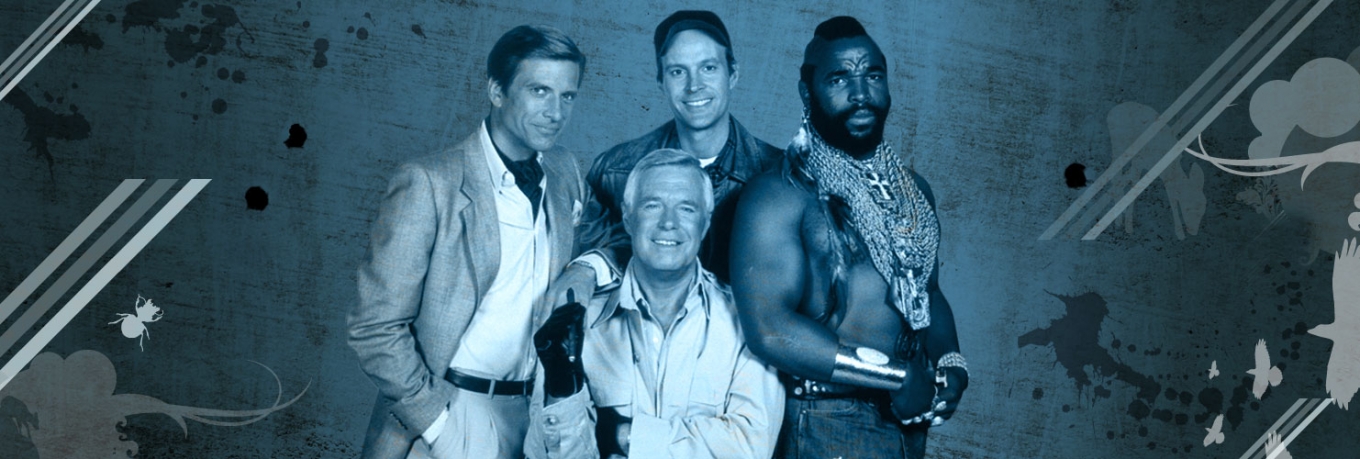The A-Team was made up of four ex-special forces soldiers, combining their diverse talents to achieve a common goal.
Research reveals The A-Team was voted as the one ‘oldie’ television show that viewers would most like to see revived, beating Knight Rider and The Dukes of Hazzard.
Creative teamwork clearly rocks in the world of fiction and can work just as well in business.
Collaboration is a key factor because it works – be it digitally or in person, Mr T or employee.
In fact, 87% of respondents agreed that collaborative working across their organisation would support creative thinking and ideas generation in our survey that delved into creativity in internal comms
Although that leaves over 10% of respondents who weren’t so sure.
With collaboration a major obsession in many organisations, it’s important to make sure we’re not becoming lazy and going through the motions of what we believe to be the right approach.
Are there times when collaboration just doesn’t work? Can it end up doing more harm than good?
Despite being on the run, The A-Team had a purpose – clearing their names and helping the oppressed, ‘If you have a problem, if no one else can help, and if you can find them, maybe you can hire the A-Team.’ A reminder to always keep in mind your own particular purpose for collaborating – whatever that may be.
It’s interesting to explore some of the reasons behind why collaboration doesn’t always reap the results required. Failing to communicate expectations, set goals and build cohesion or relying too heavily on software or social media tools rather than people can all contribute to a poor collaboration experience.
This article from PerformYard via TLNT shares some examples and investigates some of the myths of collaboration. These include:
Myth #1 Everyone’s welcome! The more the merrier…
When the time comes to form a team, the tendency may be to include as many people as possible. ‘Everyone is welcome to contribute!’ can be a nice sentiment, but can significantly hamper the process.
There is such a thing as too many cooks… Instead of overdoing it, focus on a balanced team, including the right employees to fulfil different jobs, leveraging their strengths. Look for a variety of skills, and ensure each individual has a dedicated and clear-cut role. Team members will take ownership of their specific tasks, without being bogged down by redundant bodies that can offset the fine balance.
Myth #2 The majority rule
Natural leaders within the team will tend to influence the thinking of others, consciously or otherwise. People will often support the leader or majority, even though they know something is wrong because they may feel a duty to do so. Just because the majority has decided, it doesn’t make it right.
Consider electing one person on the team to play devil’s advocate, questioning the decisions reached. The team will be forced to consider new perspectives and defend their position, making sure majority decisions can stand up to scrutiny.
Myth #3 Collaboration is easy!
‘Get people together and it’ll happen naturally.’
Collaboration takes commitment and perseverance as well as planning and understanding. Ascertaining the right attitude required, determining the best environment and fostering the right skills, abilities and working styles all takes time. Collaboration is a complex process that won’t come naturally to all. Underestimate this at your peril!
It’s a good idea to use role models and collaboration champions to demonstrate the behaviours required and remember that collaboration processes take time to develop and grow. Successful collaboration will take a concerted effort on everyone’s part.
When it does work, collaboration can solve real business problems, support life-long learning, encourage talent development and enhance creative thinking.
We love it when a plan comes together!
Tweet us @Alivewithideas with your thoughts. We’d love to hear your experiences – good or bad!
















